Voyage to the Bottom of the Sea
3.5 /10 2 Votes
Duration Language English | 6/10 IMDb Genre Adventure, Sci-Fi Country United States | |||||||||||||||||||||||||||||||||
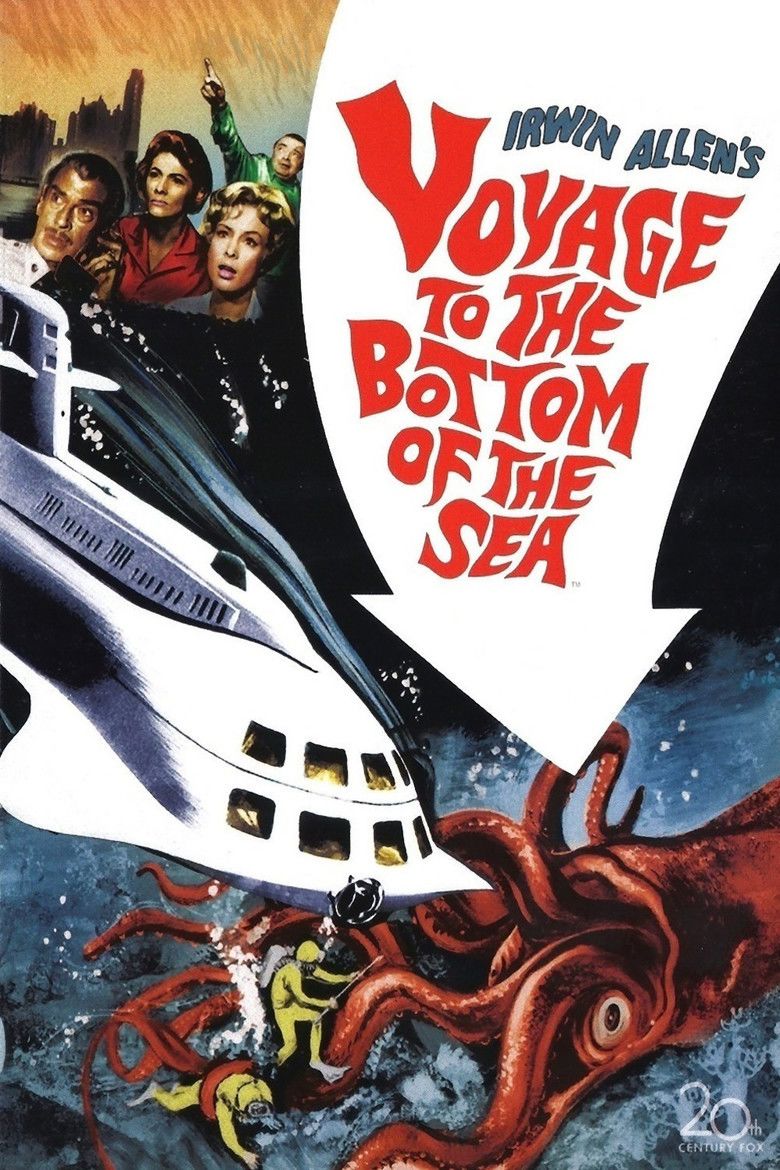 | ||||||||||||||||||||||||||||||||||
Release date July 12, 1961 (1961-07-12) Adaptations Voyage to the Bottom of the Sea (1964) Cast (Adm. Hariman Nelson), (Dr. Susan Hiller), (Lt. Cathy Conners), (Comm. Lucius Emery), (Cap. Lee Crane), (Miguel Alvares) Similar movies Das Boot , The Bedford Incident , Goliath Awaits , Hostile Waters , Independence Day , For Your Eyes Only Tagline From Hundred of Miles In Outer Space to Seven Miles Beneath the Sea! | ||||||||||||||||||||||||||||||||||
Voyage to the bottom of the sea 1961 theatrical trailer
Voyage to the Bottom of the Sea is an American science fiction film, produced and directed by Irwin Allen, released by 20th Century Fox in 1961. The story was written by Irwin Allen and Charles Bennett. Walter Pidgeon starred as Admiral Harriman Nelson, with Robert Sterling as Captain Lee Crane. The supporting cast included Joan Fontaine, Barbara Eden, Michael Ansara, and Peter Lorre. The theme song was sung by Frankie Avalon, who also appeared in the film.
Contents
- Voyage to the bottom of the sea 1961 theatrical trailer
- Plot
- Cast
- Historical and technical background
- The submarine Seaview
- Reception
- Impact
- Television
- Novels
- Comics
- Other
- References
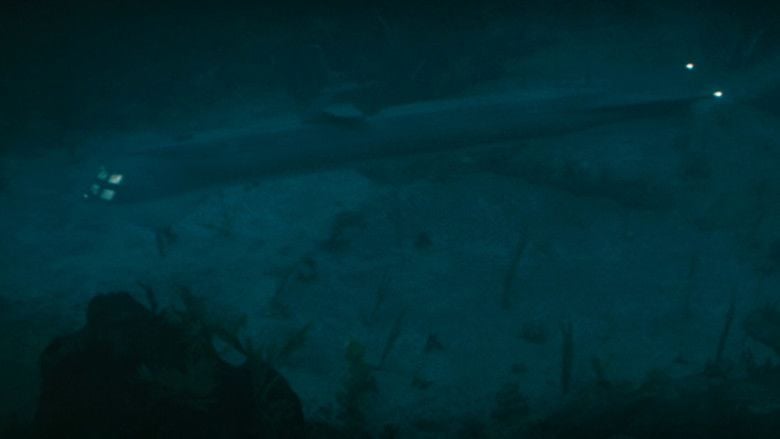
Plot
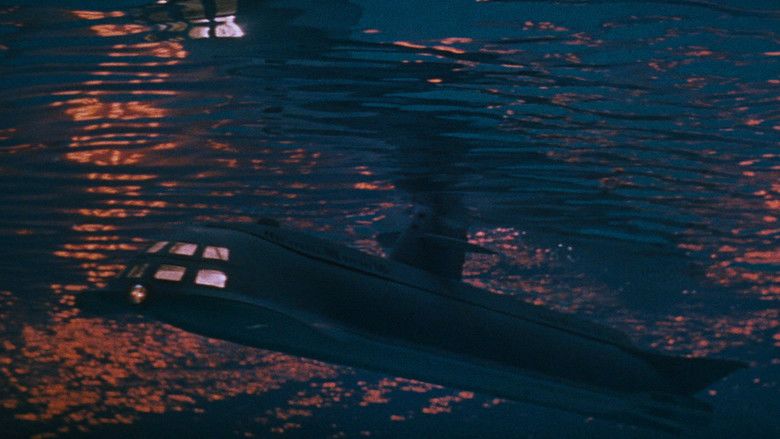
The new, state of the art nuclear submarine Seaview is on diving trials in the Arctic Ocean. The Seaview is designed and built by scientist and engineering genius Admiral Harriman Nelson (USN-Ret) (Walter Pidgeon). Captain Lee Crane (Robert Sterling) is the Seaview's Commanding Officer. One of the on-board observers is Dr. Susan Hiller (Joan Fontaine), studying crew-related stress. The mission includes being out of radio contact for 96 hours while under the Arctic ice cap, but the ice begins to crack and melt, with boulder-size pieces crashing into the ocean around the submarine. Surfacing, they discover fire burning in the sky. After the rescue of scientist Miguel Alvarez (Michael Ansara) and his dog at Ice Floe Delta, the sub receives radio contact from Mission Director Inspector Bergan at the Bureau of Marine Exploration. He advises that a meteor shower pierced the Van Allen radiation belt causing it to catch fire, resulting in a world-threatening increase in heat all across the Earth. Nelson's on-board friend and scientist, retired Commodore Lucius Emery (Peter Lorre) concurs that it is possible. Bergan informs Nelson that the President wants him at a UN Emergency Scientific Meeting as soon as possible.
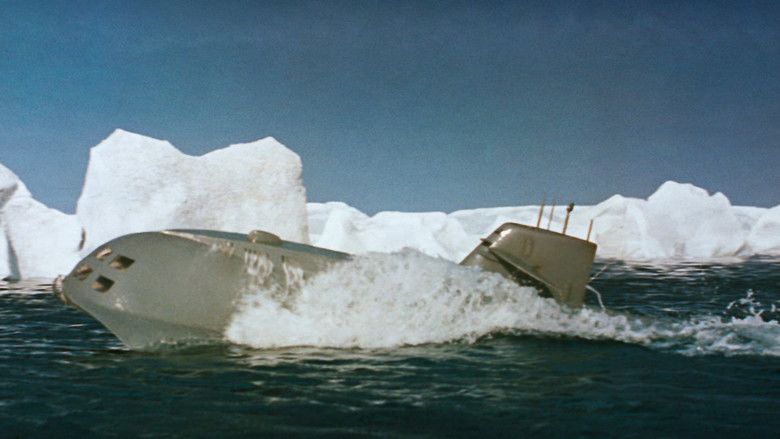
Nelson and Commodore Emery calculate a plan to end the catastrophe. The USOS Seaview arrives in New York Harbor in two days. At the meeting Nelson informs the UN that according to their calculations, if the heat increase is not stopped, it will become irreversible and Earth has "a life expectancy of about three weeks." The Admiral and the Commander have come up with a plan to extinguish the Skyfire. He proposes firing a nuclear missile at the burning belt from the best calculated location, the Marianas. Nelson posits that when fired at the right place and time, 1600 hours on August 29, the nuclear explosion should overwhelm and extinguish the flames, away into space, essentially "amputating" the belt from the Earth. The Seaview has the capability to fire the missile.
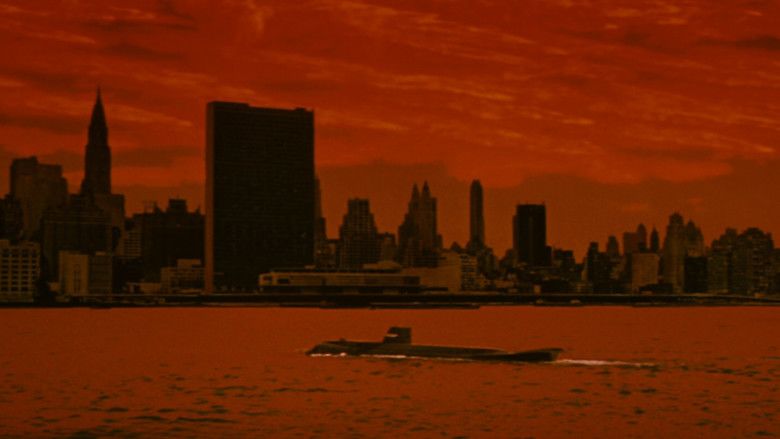
However, the Admiral's plan is rejected by the chief scientist and head delegate, Emilio Zucco (Henry Daniell) of Vienna. His reasons are that he knows the composition of gases in the belt and he believes the Skyfire will burn itself out at 173 degrees. Zucco's plan is to let the Skyfire do just that and he feels the Admiral's plan is too risky. Nelson claims that Zucco's burn-out point, however, is beyond that date and time if the current rise rate is maintained. But at Zucco's urging, Nelson and Emery are shouted down and the plan is rejected. Despite the rejection, the Admiral and the Commodore quickly leave the proceedings, advising that his only authorization will be from the President himself.
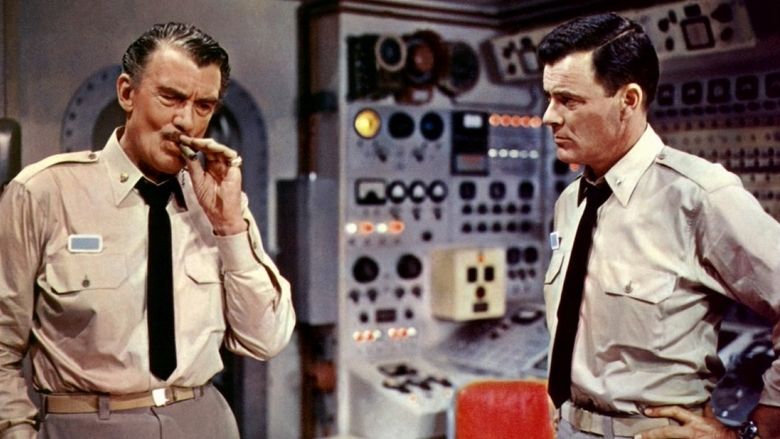
It is a race against the clock as the Seaview speeds to reach the proper firing position, above the trench in the Marianas in the Pacific. During this time Nelson and Crane agree on tapping the Rio-to-London telephone cable to try to eventually reach the President. However, an unsuccessful attempt on the Admiral's life makes it clear that there is a saboteur on board. But the confusion over who the saboteur might be revolves around rescued scientist Miguel Alvarez, who has become a religious zealot regarding the catastrophe, and Dr. Hiller, who secretly admires Dr Zucco's plan. Other obstacles present themselves: a minefield and a near-mutiny. And Crane himself begins to doubt the Admiral's tactics and reasoning. During the telephone cable attempt, Crane and Alvarez battle a giant squid. Although the London cable connection is made, Nelson is told there's been no contact with the States for 35 hours. Also, a hostile submarine follows the Seaview deep into the Mariana Trench, but implodes before it can destroy the Seaview.
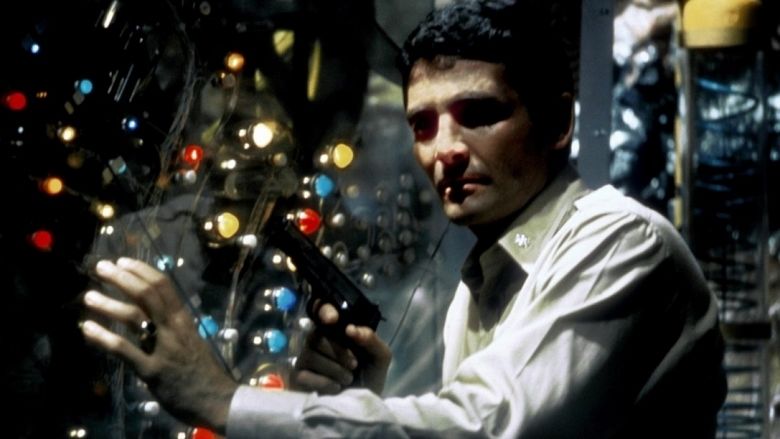
Near the end of the film the saboteur is revealed to be Dr. Hiller. Captain Crane happens by as she exits the ship's "Off Limits" Nuclear Reactor core, looking rather ill. She has been exposed to a fatal dose of radiation: her detector badge is deep red. Walking over the submarine's shark tank, she falls in during a struggle with the Captain, and is killed by a shark. The Admiral learns that temperatures are rising faster than expected. He realizes that Zucco's belief that the Skyfire will burn itself out is in error.

At the end, Seaview reaches the Marianas. There, in spite of the threats and objections of Alvarez, Seaview launches a missile toward the belt and it explodes the burning flames outward, saving the world.
Cast
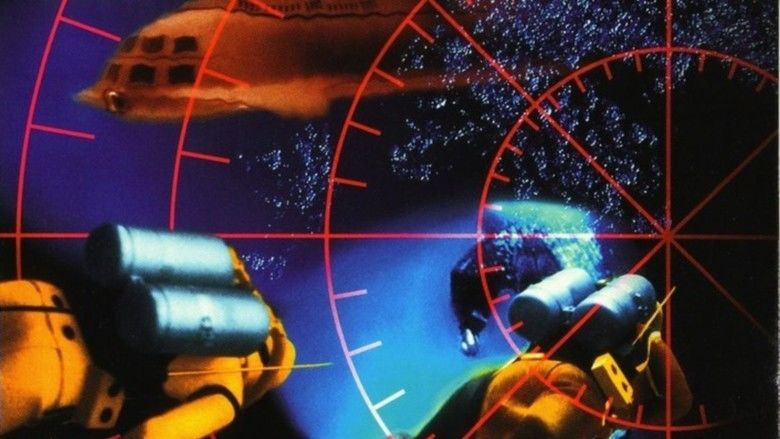
Historical and technical background
The name of the film is an inversion of a phrase popular at the time, concerning the exploration of the Arctic Ocean by nuclear submarines, namely, "a voyage to the top of the world."
From August 1, 1958, through August 5, 1958, USS Nautilus (SSN-571) (the first nuclear-powered submarine, and the first nuclear-powered ship of any kind), under the command of Commander (later Captain) William R. Anderson, steamed under the Arctic ice cap to make the first crossing from the Pacific to the Atlantic via the North Pole. On August 3, 1958, she became the first ship to reach the North Pole.
For this accomplishment, Nautilus and her crew were awarded the Presidential Unit Citation, the first Presidential Unit Citation awarded in peacetime. The citation began with the words, "For outstanding achievement in completing the first voyage in history across the top of the world, by cruising under the Arctic ice cap from the Bering Strait to the Greenland Sea."
Nautilus 90 North (1959, with Clay Blair) was the first book Anderson wrote about the Arctic missions of USS Nautilus. It was named for the radio message he sent to the Chief of Naval Operations to announce that Nautilus had reached the pole. His second book about these missions, The Ice Diaries: The Untold Story of the Cold War's Most Daring Mission (with Don Keith), was completed shortly before Anderson's death. This second book includes many previously classified details.
On March 17, 1959, the nuclear submarine USS Skate, under the command of Commander (later Vice Admiral) James F. Calvert, became the first submarine to surface at the North Pole. While at the Pole, her crew scattered the ashes of Arctic explorer Sir Hubert Wilkins. Calvert wrote the book Surface at the Pole about this and the other Arctic missions of USS Skate.
The film Voyage to the Bottom of the Sea begins with Seaview in the Arctic for the final phase of her sea trials, including a dive under the ice cap.
Two milestones in underwater exploration were achieved in 1960, the year before Voyage to the Bottom of the Sea was released. On January 23, 1960, Jacques Piccard and Lieutenant Don Walsh (USN), in the bathyscaphe Trieste, made the first descent to the bottom of the Challenger Deep. The Challenger Deep is the deepest surveyed spot in the world's oceans, and is located in the Mariana Trench, southwest of Guam. From February 16, 1960, to May 10, 1960, the submarine USS Triton, under the command of Captain Edward L. Beach, Jr., made the first submerged circumnavigation of the world. Triton observed and photographed Guam extensively through her periscope during this mission, without being detected by the U.S. Navy on Guam.
In the film, Seaview fires a missile from a position northwest of Guam to extinguish the "skyfire."
At the time that Voyage to the Bottom of the Sea was made, the Van Allen radiation belts had only recently been discovered, and much of what the film says about them is made up for the film. Discoveries since then clearly invalidate what the film says: the Van Allen belts (actually somewhat more radiation-dense portions of the magnetosphere) are made up of sub-atomic particles trapped by the Earth's magnetic field in the vacuum of space and cannot catch fire, as fire requires oxygen, fuel and an ignition source, all of which are insufficient in the Van Allen Belts. Unburned hydrocarbon emissions have never reached concentrations that could support a "skyfire."
The submarine Seaview
The film's submarine design is unique in that it features an eight-window bow viewport that provides panoramic undersea views. In the novel of the film by Theodore Sturgeon, the windows are described as "... oversized hull plates which happen to be transparent." They are made of "X-tempered herculite", a process developed by Nelson. In the film, Seaview's bow has eight windows in the exterior shots, but only four windows appear to be seen in the interior shots of the Observation Room (the four upper windows were implied to be out of frame, at the top of the observation room). The bow also has a shark-like bottom flare, and the stern has 1961 Cadillac tail-fins, the "Cadillac" of submarines. In the film, the USOS Seaview (United States Oceanographic Survey) is under the authority of Nelson and the Bureau of Marine Exploration rather than the U.S. Navy. The novel mentions the bureau as being part of the U.S. Department of Science.
Reception
Voyage to the Bottom of the Sea was released to movie theaters in early July 1961 and had run its course by late fall (September/October). The film played to mixed reviews from critics, but audiences made it a success. Voyage to the Bottom of the Sea was made for US$2 million and brought in US$7 million in box office revenue.
Impact
For the filming of Voyage to the Bottom of the Sea, a number of detailed sets, props and scale models were created to realize the Seaview submarine. After the film was finished the sets were placed in storage. When Irwin Allen decided to make a Voyage to the Bottom of the Sea television series, all he had to do was pull the sets out of storage. This was done at a fraction of the cost that he might have had if he had begun from scratch. The film reduced the cost of setting up the show and was the template for the type of stories that were done. The studios, having made the film, helped make the television series easier to produce.
The success of the television series encouraged Irwin Allen to produce other science fiction television shows. The most notable of these shows were Lost in Space, The Time Tunnel, and Land of the Giants.
Television
The success of the film led to the 1964–1968 television version on ABC, Voyage to the Bottom of the Sea. During the run of the series this film was remade as a one-hour episode. The episode was written by Willam Welch and was titled "The Sky's on Fire." No mention is made in the episode of the skyfire ever happening before. This is one of several reasons that proves the film is not part of the television series' continuity. Many of the scenes in the film became scenes or even episodes in the television series.
Novels
In June 1961, Pyramid Books published a novelization of the feature film by Theodore Sturgeon. The book was reprinted several times during the 1960s. One of those reprintings has Richard Basehart and David Hedison pictured on the cover, but the book is still based on the Walter Pidgeon film. Collectors who want a novelization of the television series should find City Under the Sea. That book uses the television characters, but should not be confused with either the television episode or the later Irwin Allen film of the same name.
Sturgeon's book is based on an early version of the film's script and has the same basic story as the film. The book also has a few characters that were not shown in the film and some additional technical explanation. Some scenes are different from the film. Some scenes in the book are wholly absent from the film, and likewise some scenes from the film are entirely missing from the book.
The original 1961 cover of Sturgeon's book shows a submarine meeting a fanged sea serpent. This scene appears in neither the novel nor the film. The design of the submarine on the 1961 cover matches neither the Seaview shown in the film nor the Seaview described in the novel. The cover submarine's bow is opaque, and her "Observation Room" is a rearward projection from the base of the conning tower. The basic shape of her hull resembles that of USS Skipjack (SSN-585), the first American nuclear-powered submarine with an "Albacore hull", including the cruciform stern and single propeller.
Comics
A submarine design very similar to the craft on the 1961 cover, and its mission to save the world, shows up in a Dell Comics series called Voyage to the Deep in 1962 to capitalize on the movie's popularity. Its mission also took it to the Mariana Trench to stop the Earth from wobbling out of orbit. It stopped publishing by issue #4. That ship was named Proteus, later the name of the 'submarine' in Fantastic Voyage.
In 1961 Dell Comics created a full color adaptation of the Voyage to the Bottom of the Sea movie. The comic was Four Color Comics #1230 and drawn by Sam Glanzman. It has a few publicity stills of the movie plus a section on the history of submarines. In the comic book the Admiral's first name is Farragut instead of Harriman. There was also a Voyage to the Bottom of the Sea coloring book released in the mid-1960s.
MAD Magazine published a parody based on the TV series in one of their monthly issues entitled, "Voyage to See What's on the Bottom".
The movie poster shown at the top of this article is one of four posters that were made to promote the film. Each has different wording and slightly different drawings. Each poster promotes the movie from a different perspective. The poster shown also promotes Sturgeon's book.
Other
There is also a board game, manufactured by a company called GemColor, that is tied to the movie and not the television show. The box has a photo of a diver with an eight-foot miniature of the Seaview.
The film has been released on VHS, DVD and Blu-ray.
References
Voyage to the Bottom of the Sea WikipediaVoyage to the Bottom of the Sea IMDb Voyage to the Bottom of the Sea themoviedb.org
